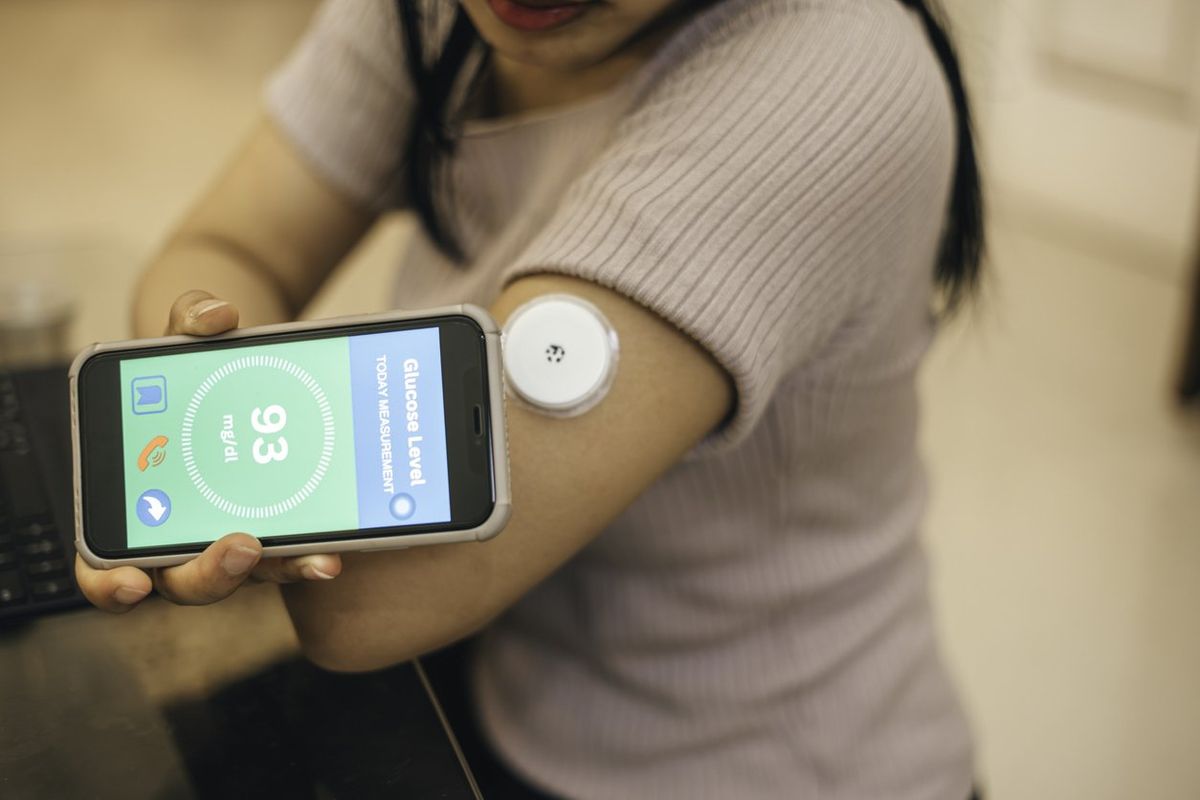If you or someone you know has diabetes, you’ve probably heard of continuous glucose monitors (CGMs). The small circular medical devices track blood glucose (sugar) levels via a small sensor under the skin. You’ve probably seen the commercials featuring pop star Nick Jonas showing off his CGM secured to the back of his (very toned) arm.
Jonas tricep aside, CGMs have been in the spotlight lately since the FDA approved the first over-the-counter (OTC) CGM earlier this year.
The clearance is a big deal because it allows anyone over the age of 18 to purchase the CGM without a prescription. Before the new OTC options, all CGMs required a prescription and were typically prescribed to people who have diabetes and take insulin to control blood sugar levels.
The FDA said it’s expanding access to CGMs so people with Type 2 diabetes — and really anyone who wants to monitor their blood sugar levels — can do so regardless of health insurance.
Continuous glucose monitors for people with diabetes
For anyone with diabetes, access to CGMs can be life-changing. Diabetes is a disease where your body either doesn’t make enough insulin (Type 1) or doesn’t use the insulin in the right way (Type 2). People with either type can experience high blood sugar levels, which can cause serious health issues over time, including kidney and heart damage. That’s why keeping blood sugar levels within a target range (80 to 130 for the average adult) is so important.
Read: The Intersection of Heart Disease, Diabetes and Stroke >>
CGMs offer more freedom and less pain than using a standard glucose monitor. Instead of having to prick your fingers multiple times a day, the CGM sensor is inserted into your arm, typically once every two weeks, and paired with an app on your smartphone, allowing you can get your numbers right away. That can also mean less time devoted to the process of stopping whatever you’re doing to get to a sanitary place and check your blood sugar.
People with diabetes, or even prediabetes, can use a CGM to look at different health factors, including the impact of certain foods, exercise and medications.
It’s important to note that the OTC CGMs are not the same as prescription CGMs (like the one Jonas wears). The OTC monitors don’t recognize low blood sugar levels, also called hypoglycemia, which can be life threatening if not caught in enough time. If you’re worried about low blood sugar levels, talk to your healthcare provider right away.
Continuous glucose monitors for people who don’t have diabetes
People who don’t have diabetes or known blood sugar issues can use OTC CGMs to look at how food and exercise impacts glucose levels. Having the numbers may help motivate some people to make healthier lifestyle choices. However, research is ongoing regarding the health benefits CGMs may have for people who don’t have diabetes.
Some researchers have said the data can lead to people making unhealthy choices like skipping meals to stay within their target range. And there’s always the chance that the CGM may not be as accurate as you think if it’s applied incorrectly or malfunctions.
Another potential issue is the cost: OTC CGMs aren’t exactly cheap. For example, one two-week plan that includes a sensor and access to the app is $49.
You may not need a prescription for an OTC CGM, but you should talk to your healthcare provider before buying one to make sure it's right for you and your health goals. It’s what Nick Jonas would want you to do.







